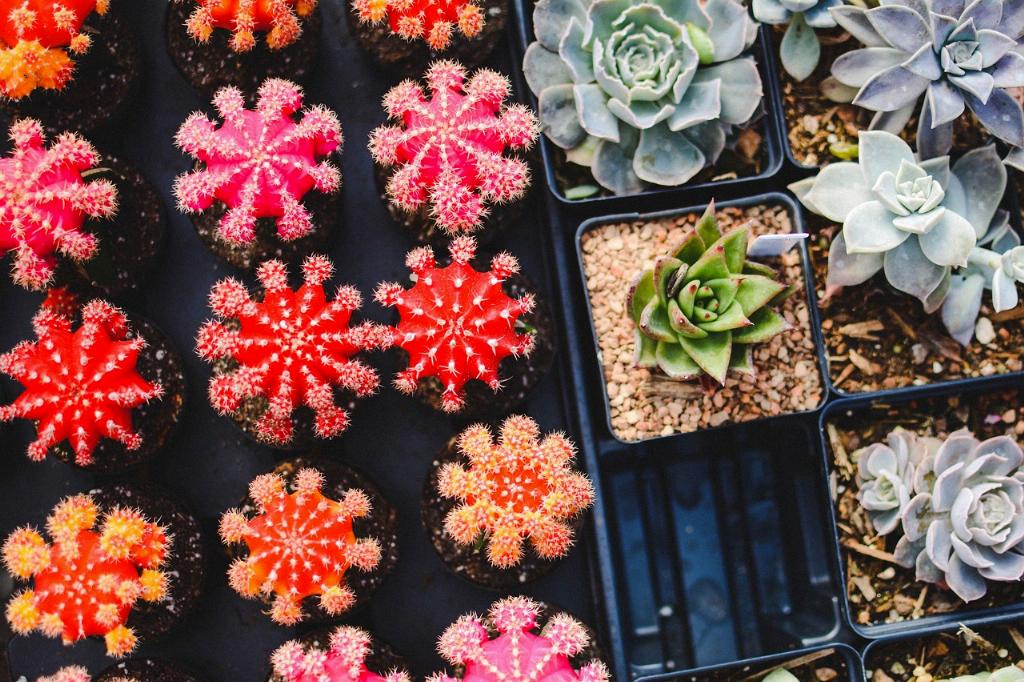When pondering the question of whether a cactus is a flower, it is essential to delve into the intricate world of botany and explore the defining characteristics of these fascinating plants. While it is true that some cacti do produce vibrant and beautiful flowers, it is crucial to recognize that the presence of flowers does not categorically define a cactus as a flowering plant.
The Definition of a Cactus
A cactus is not defined by its ability to bloom but rather by its biological characteristics and evolutionary adaptations. Cacti belong to the family Cactaceae and are known for their distinctive features, including succulent stems, spines, and unique photosynthetic mechanisms.
The Role of Flowers in Cactus Physiology
While many cacti produce flowers as part of their reproductive cycle, the primary function of these plants is not centered around flowering. Instead, cacti have evolved to thrive in arid environments by storing water in their stems and engaging in efficient water and carbon dioxide exchange through specialized photosynthetic pathways.
Diversity of Cactus Species
Cacti encompass a wide range of species, each with its own unique characteristics and adaptations. Some cacti, such as the popular Christmas cactus, are prized for their colorful and showy flowers, while others may produce more subtle blooms or focus their energy on survival in harsh desert conditions.
The Importance of Succulence
One of the defining features of cacti is their succulent nature, which enables them to thrive in environments with limited water availability. The ability to store water in their stems allows cacti to withstand prolonged droughts and survive in arid regions where other plants struggle to grow.
Adaptations for Arid Environments
Cacti have evolved a variety of adaptations to survive in desert climates, including reduced leaves to minimize water loss, specialized root structures for efficient water uptake, and mechanisms for storing water in their tissues. These adaptations contribute to the resilience and longevity of cacti in harsh conditions.
Flowering in Cacti
While the presence of flowers is a notable characteristic of many cacti, it is important to understand that flowering is just one aspect of their overall biology. Cacti produce flowers as part of their reproductive cycle, attracting pollinators and ensuring the continuation of their species.
Appreciating Cacti Beyond Flowers
While the flowers of cacti may capture our attention with their beauty and diversity, it is essential to appreciate these plants for their comprehensive set of adaptations and survival strategies. Cacti serve important ecological roles in arid ecosystems and have a rich history of cultural significance.
Education and Conservation
By deepening our understanding of cacti and their unique characteristics, we can foster a greater appreciation for these remarkable plants and advocate for their conservation. Education about the importance of preserving cacti habitats is crucial for ensuring the long-term survival of these extraordinary species.
The Intriguing World of Cacti
Exploring the world of cacti reveals a diverse and fascinating array of plants that have evolved to thrive in some of the harshest environments on Earth. Whether admiring their flowers, studying their adaptations, or learning about their cultural significance, cacti hold a special place in the realm of botany and conservation.

Conclusion
In conclusion, while some cacti may produce flowers, the presence of flowers alone does not define a cactus as a flowering plant. Cacti are distinguished by their succulent nature, unique adaptations for survival in arid environments, and diverse array of species that encompass a wide range of biological characteristics. By appreciating cacti for their entirety, we can gain a deeper understanding of these extraordinary plants and the critical role they play in our world.
